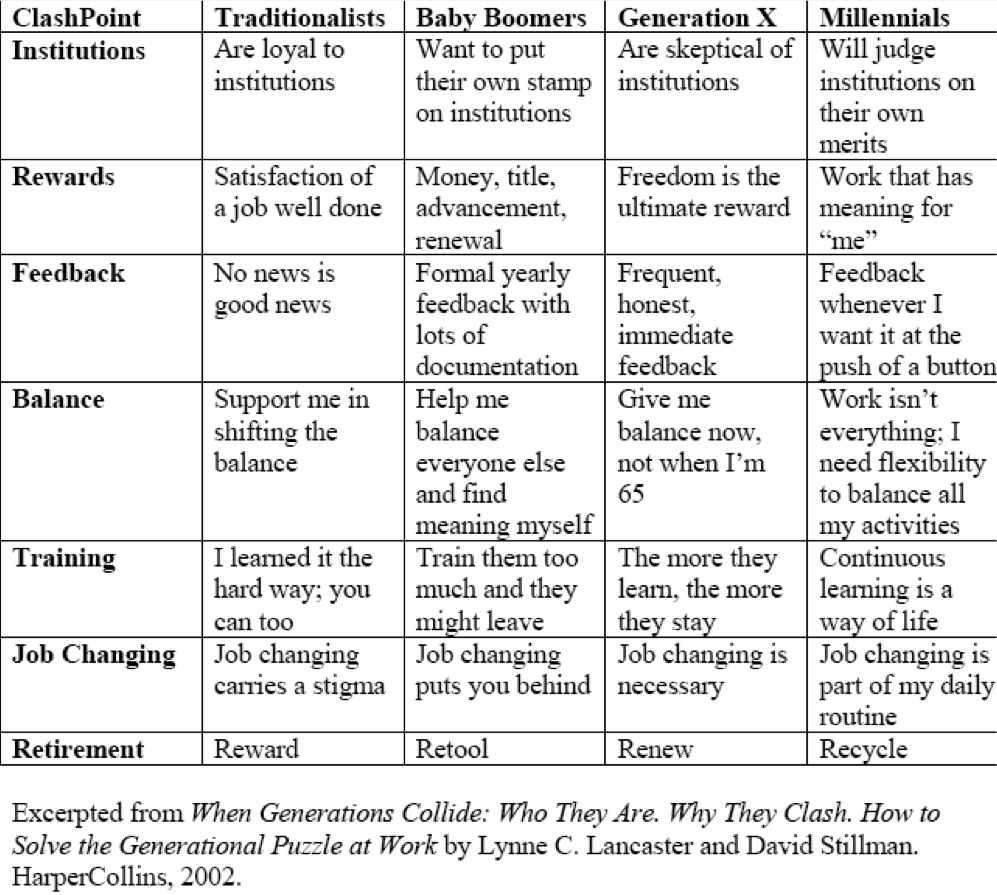Last spring I attended a women in IT networking event where the speaker discussed the fact that for the first time in history, there are 4 generations in the workplace:
- Traditionalists - born prior to 1946
- Baby boomers - born between 1946 and 1964
- Generation X - born between 1965 and 1981
- Millenials - born between 1982 and 2000
Because people are living and working longer, we need to take into account the knowledge and talents everyone brings to the table, and find ways to minimize the clash points: This is why I was heartened to read this recent Wall Street Journal article, "Reverse Mentoring Cracks Workplace."
This is why I was heartened to read this recent Wall Street Journal article, "Reverse Mentoring Cracks Workplace."
In an effort to school senior executives in technology, social media and the latest workplace trends, many businesses are pairing upper management with younger employees in a practice known as reverse mentoring....Technology and global thinking are changing so quickly that older executives want to catch up, says Lois Zachary, president of Leadership Development Services LLC, a Phoenix-based consulting firm that helps companies implement mentoring programs. "But it also helps younger people get comfortable in a company. It promotes loyalty, it generates trust."...Andrew Graff, CEO of Allen & Gerritsen, a Watertown, Mass., ad agency, says he was one of the first to volunteer when his company launched a reverse mentoring program last year.The 47-year-old has since come to lean on his mentor, 23-year-old Eric Leist, for guidance on everything from the latest smartphone apps to the layout for a new office. Mr. Graff says the most important lesson he has learned is how to be flexible, including allowing employees to work unconventional hours and to check in from home or a coffee shop.
As companies create environments that recognize the value and diverse perspectives their employees bring to the table, and give employees the mechanisms to provide that feedback, the companies will be able to evolve to compete in the changing global market for talent as well as for consumers and market share.

